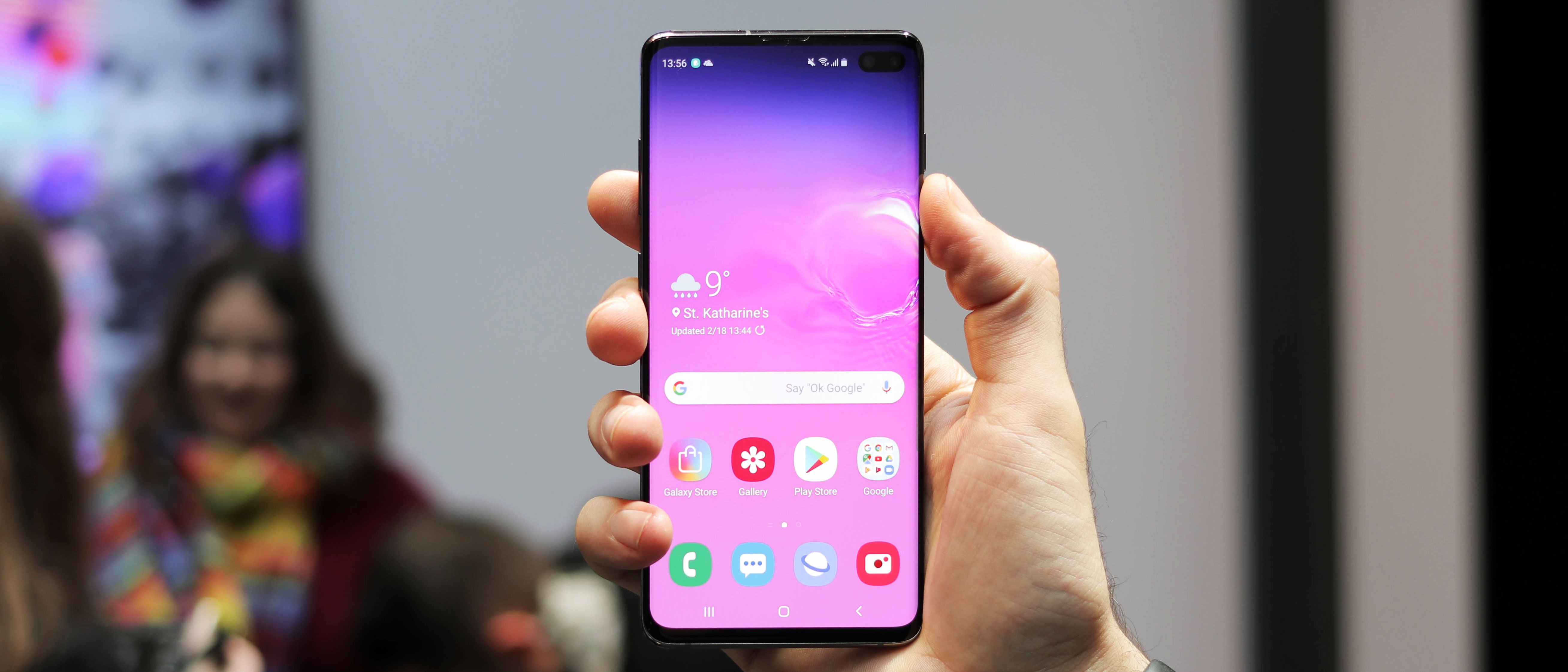Why you can trust TechRadar
Battery life
The Samsung Galaxy S10 Plus battery hits a new high for the firm’s S series of phones, with a 4,100mAh capacity.
Last year’s S9 Plus was above average for Android flagships, delivering all-day battery life from its 3,500mAh unit, but the S10 Plus performed better for us in our tests.
Samsung still claims “all-day battery life or a bit more,” maybe because of the bigger screen here, or maybe just to play it safe.

With moderate use – some Spotify streaming, a healthy amount of messaging and social media, an hour or two of Netflix and a smattering of gaming – we found it easy to end the night with an impressive 10% to 30% battery left.
Start enabling some of the additional features on the Galaxy S10 Plus and the battery will of course take a hit. For example, firing up the handy always-on display, which shows you the time, date and notification icons when the screen is ‘off’ used about 8-10% of the battery in a day. Also upping the resolution from the default Full HD+ to QHD+ will deplete the battery more quickly.
Samsung’s new Wireless PowerShare feature turns the back of the S10 Plus into a big Qi charging mat, which is great if you’re feeling generous when your friend runs low on battery and feel comfortable sparing some of your hefty 4,1000mAh capacity.
PowerShare worked flawlessly for us during our time with the S10 Plus, enabling us to charge the Galaxy Buds in their case when we placed them on the lower third of the back of the phone.
Samsung hasn’t showed favoritism here either: any Qi charging phone worked in our tests, including the iPhone XS Max. We used this feature more than we thought we might during our time at MWC 2019 – and we became quite popular.
Knowing that PowerShare turns off when your phone drops down to 30% battery life is comforting – as is realizing that your iPhone XS-owning friend has a 2,658mAh capacity for the price of your S10 Plus.
To its credit, we were introduced to reverse wireless charging on the Huawei Mate 20 Pro, however, Samsung's S10 series will make the technology more widely accessible.
Samsung also makes it much easier to access Wireless PowerShare via the quick settings menu in the notification shade, whereas Huawei buries its feature in a forest of settings submenus.
A word of warning: if you do pick up a case for your Galaxy S10 Plus, it may well prevent you from using PowerShare – especially the chunkier options. It means you’ll have to remove the phone from the case before being able to use the feature.
Samsung’s Fast Wireless charging technology should work fine with most cases though, allowing you to top up the Galaxy S10 Plus via a charging pad.

Abbas has been living and breathing tech before phones became smart or clouds started storing data. It all started when he got his very first computer- the Sinclair ZX Spectrum. From computers to mobile phones and watches, Abbas is always interested in tech that is smarter and smaller because he believes that tech shouldn’t be something that gets added to your life- it should be a part of your life.
